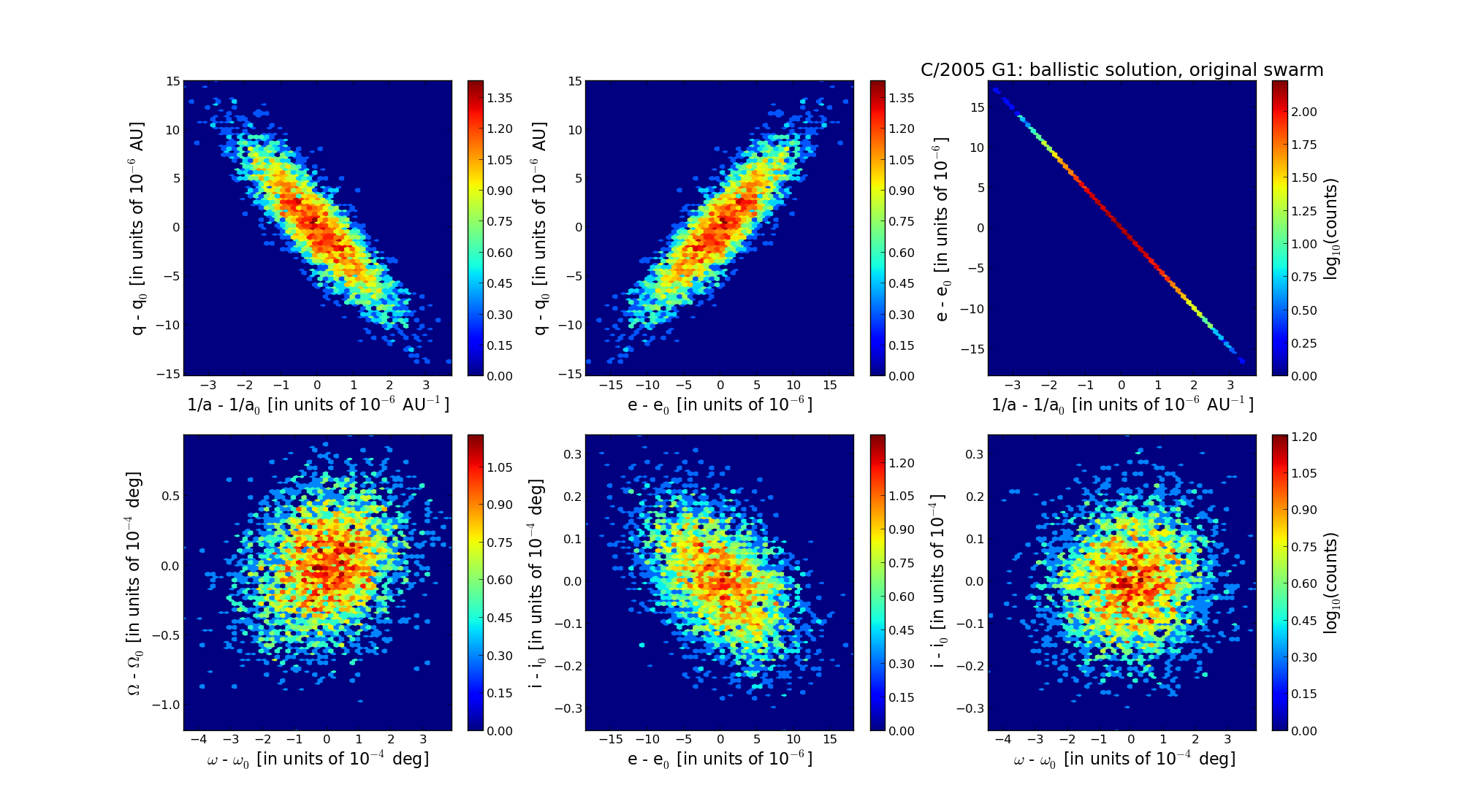C/2005 G1 LINEAR
more info
C/2005 G1 was discovered on 1 April 2005 by the LINEAR as an apparently asteroidal object. Its cometary apperance was reported three days later by C. Hergenrother using 1.54-m Kuiper reflector at Catalina. Prediscovery LINEAR detections from 22 March 2005 were also found [IAUC 8504, 2005 April 4].
This comet made its closest approach to the Earth on 3 March 2006 (4.549 au), four days after its perihelion passage.
Solution given here is based on data spanning over 2.0 yr in a range of heliocentric distances: 5.61 au – 4.961 au (perihelion) – 5.73 au.
This Oort spike comet suffers slight planetary perturbations during its passage through the planetary system.
See also Królikowska 2014 and Królikowska and Dybczyński 2017.
This comet made its closest approach to the Earth on 3 March 2006 (4.549 au), four days after its perihelion passage.
Solution given here is based on data spanning over 2.0 yr in a range of heliocentric distances: 5.61 au – 4.961 au (perihelion) – 5.73 au.
This Oort spike comet suffers slight planetary perturbations during its passage through the planetary system.
See also Królikowska 2014 and Królikowska and Dybczyński 2017.
| solution description | ||
|---|---|---|
| number of observations | 292 | |
| data interval | 2005 03 22 – 2007 03 11 | |
| data type | perihelion within the observation arc (FULL) | |
| data arc selection | entire data set (STD) | |
| range of heliocentric distances | 5.61 au – 4.96 au (perihelion) – 5.73 au | |
| detectability of NG effects in the comet's motion | NG effects not determinable | |
| type of model of motion | GR - gravitational orbit | |
| data weighting | YES | |
| number of residuals | 573 | |
| RMS [arcseconds] | 0.49 | |
| orbit quality class | 1a | |
| orbital elements (barycentric ecliptic J2000) | ||
|---|---|---|
| Epoch | 1700 12 15 | |
| perihelion date | 2006 02 26.53361600 | ± 0.00096900 |
| perihelion distance [au] | 4.95322048 | ± 0.00000434 |
| eccentricity | 0.99991785 | ± 0.00000505 |
| argument of perihelion [°] | 113.858813 | ± 0.000118 |
| ascending node [°] | 299.571155 | ± 0.000029 |
| inclination [°] | 108.385968 | ± 0.000009 |
| reciprocal semi-major axis [10-6 au-1] | 16.58 | ± 1.02 |
| file containing 5001 VCs swarm |
|---|
| 2005g1_w.bmi |

